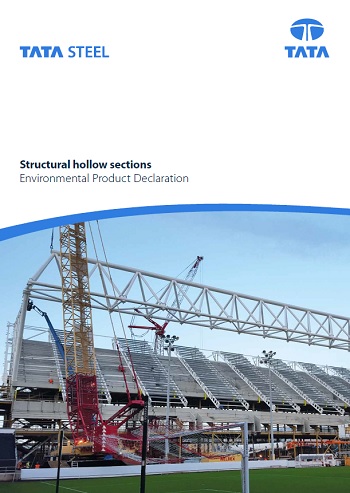Environmental Product Declarations (EPDs) are an important validation tool, both for manufacturers to provide transparent data about the environmental sustainability of its products and for specifiers to make informed purchasing decisions

Environmental Product Declarations (EPDs) are an important validation tool, both for manufacturers to provide transparent data about the environmental sustainability of its products and for specifiers to make informed purchasing decisions. Despite this, the role and purpose of EPDs are still not widely understood within the industry. Here, Barry Rust at Tata Steel discusses the importance of EPDs and the benefits it can provide to specifiers.

It is difficult to ignore the effects we as a human race are having on the environment. Consequently, it is of no surprise that sustainability has become a key factor for those involved in the construction industry to consider, with increased pressure placed on specifiers to help minimise the environmental impact of a building and the materials required for its construction. It is therefore crucial that specifiers are aware of Environmental Product Declarations (EPDs), for it can provide detailed information about a product and its sustainable attributes.
An EPD is a document that contains life-cycle inventory data and provides a transparent overview of a product’s impact on the environment, typically from ‘cradle to grave’. This Life Cycle Assessment (LCA) will take into account the extraction of raw materials, the manufacturing process, distribution, the product’s use and also its end-of-life value, such as whether it can be recycled or reused. Steel is an example of a highly sustainable building material, with qualities well-suited to circular economic use and capable of being reused and infinitely recycled without loss of quality.
In addition to supporting a life-cycle way of thinking and encouraging consideration of how our decisions can have an effect on the environment, EPDs provide specifiers with the product data necessary to make informed decisions and choices.
Taking EPDs into consideration when selecting building materials for the construction of a new development or renovation project can help specifiers meet client sustainability requirements, reduce the environmental impact of the building and even achieve green building certification, such as BREEAM or LEED. Specifying sustainable building products with an EPD, which has been externally verified as compliant to the relevant standards, can contribute numerous credits towards attaining such certification, which can then lead to positive results for both the building developer and owner. For example, BREEAM and LEED-rated buildings often have an increased market value, receiving higher sales and rental value, in addition to the building’s operating and maintenance costs being noticeably lower.
EPDs can also be used by specifiers to help control building waste, a significant issue currently faced by the construction industry, and encourage the re-use and recycling of building materials at the end of their life. What’s more, making informed product choices at the specification stage could contribute to the reduction of the building developer’s CO2 footprint over the life cycle of the building, a status which could in turn be used to help the developer stand out in an otherwise competitive market.
This is not to say, however, that the benefits of EPDs are limited to the individual project or building developer. EPDs promote a new, environmental way of thinking and their focus on making transparent data readily available could have the potential to encourage change within the wider manufacturing and supply chain itself, leading to a higher level of credibility and sustainability across the construction industry as a whole.
There’s no denying that mitigating the effect the construction industry is having on the environment is a huge challenge. However, making conscious decisions about our buildings and the products used in their construction will go a long way towards achieving this goal. Specifiers should therefore make every effort to liaise with a manufacturer who provides EPDs specific to the product they are thinking of using, so that they can then make informed resource decisions and also ensure that the sustainability and environmental impact of the building is being considered. For example, Tata Steel, who has recently become an EPD Programme Operator, has an increasing number of externally verified and ISO standards compliant EPDs available, making it easier for specifiers to access transparent environmental data, consider the whole life-cycle of the building product and gain maximum points under international building certification schemes.
Find out more or download Tata Steel's range of EPD resources.

































































































































































































































